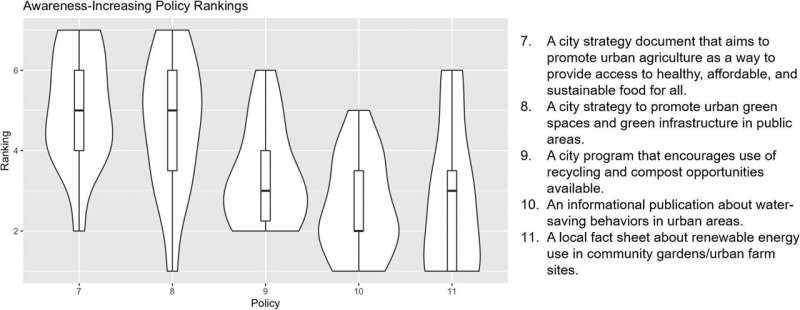Phillip Inman and Jem Bartholomew
Sat, 2 December 2023

Photograph: Alamy
When Kat Butler made her first post-lockdown trip to the high street in 2021, she found herself staring, disorientated, at the aisles of clothes in the Perth branch of Mountain Warehouse. “There was just rails and rails of stuff,” she says.
Before the pandemic, Butler, 36, a freelance graphic designer, had enjoyed browsing clothes shops, touching the fabrics and inspecting garments’ construction. But when she returned after the lockdown months, she was “just overwhelmed by the amount of stuff”.
That sent Butler’s mind spinning into worries about the environmental impact of those unending hangers of garments, and led her to re-evaluate her consumption habits.
She is not the only person to have started questioning the idea of shopping as a leisure pursuit. Plenty of consumers report remonstrating with themselves and their friends about the state of the planet, and how that collides with their desire to freshen up their wardrobe with fast fashion and £5 dresses.
With the Christmas shopping season entering its peak, this soul-searching has raised several questions. Is a growing slice of western society finally falling out of love with consumption and growth as an end in itself? And if this phenomenon, described at its most extreme as “degrowth”, is taking hold, how will economies meet their spending needs? Or is it just that surging inflation and a cost of living crisis have placed a speed bump in the way of ever more consumption?
Make do and mend
Online retailers including Amazon and eBay have reported surging sales of secondhand clothes, and the arts and crafts industry, which boomed during the pandemic, is expected to carry on growing for the rest of the decade as people prefer to make stuff rather than buy it new.
In a survey by management consultancy McKinsey in 2020, two-thirds of consumers said they wanted to turn their backs on fast fashion, believing that limiting climate change was even more important following Covid. The survey was commissioned to accompany a report on the fashion industry with a focus on the UK, which is Europe’s biggest consumer of fashion.
Clothing accounts for between 3% and 10% of global carbon emissions, depending on how the industry’s output is measured. As such, it has become totemic among the growing number of experts and consumers who want the capitalist merry-go-round to slow or even stop.
More broadly, in a YouGov survey in August this year, 46% of respondents said environmental sustainability had affected their general household purchases a “fair amount,” up from 41% of those surveyed in August 2019. Among 18-24s the change was starker, rising from 38% to 46% over the same period. (However, people saying it affected spending to a “large extent” fell from 18% to 15%.)

Young people are choosing vintage or charity shops rather than retail chains. Photograph: Chris Hellier/Alamy
Young people are also less likely to drive a car, citing environmental concerns and cost. They are also more likely to have fewer or no children for the same reason, according to a survey carried out in August in Britain, Denmark, France, Germany, Italy, Spain and Sweden.
Meanwhile, people are still facing severe financial struggles, with 1.8m UK households – almost 3.8 million people – reporting having suffered destitution at some point in 2022, according to the Joseph Rowntree Foundation. A KPMG survey found that two-thirds of UK consumers planned to cut discretionary spending this year.
Growth at all costs?
The terms degrowth and post-growth are used increasingly to popularise the idea that in the 21st century, capitalism is no longer the best allocator of scarce resources.
Supporters of mixed-economy capitalism – where private and state capital investments allow for higher standards of living and greater consumption – say this provides the money for everything from indoor plumbing to new railways.
However, critics argue that in rich countries, where most basic needs have already been met, it encourages us to buy all kinds of things we do not need and speeds us towards climate catastrophe.
We’re trying to convince ourselves we can kickstart growth without a debate about what needs to be doneTim Jackson, economist
The Austrian-French social philosopher André Gorz is widely credited with having coined the term degrowth in 1972, although it did not start to take off as a movement until the early 2000s.
Prof Tim Jackson, an ecological economist, says that as western governments run out of financial lifelines, they are “stumbling into a post-growth world without having a clue how to manage it”. Jackson has run the Centre for the Understanding of Sustainable Prosperity since 2016. An early adopter of degrowth, he wrote a report for the last Labour government on how to retool the economy for a changing climate. This led to his 2009 book, Prosperity without Growth, which was followed in 2021 by Post Growth – Life After Capitalism.
“We are trying to convince ourselves that we can kickstart growth again without having a transparent debate about what needs to be done,” he says.
Two events last month make his point. In Jeremy Hunt’s autumn statement, the UK chancellor glossed over a £20bn shortfall in spending on public services to free up £9bn for corporate tax cuts and £4.5bn of business subsidies, which officials hope will be spent on, among other things, greening the car industry.
A week earlier the German constitutional court had overruled the government’s plan to use special “off-balance-sheet” vehicles to circumvent strict rules constraining the annual budget. As a result, billions of euros’ worth of green projects are expected to be cancelled.
Local not national
Jackson says the momentum behind climate activism suffered a knock during the pandemic, but is recovering. More recently, a lively debate about whether the standard measure of an economy’s health – gross domestic product (GDP) – needs replacing has surprised him.
“The critique of GDP has had more traction than I would have expected,” he says. “You can see how people have come to understand that the gains from GDP growth don’t trickle down.”
Like most post-growth theorists, Jackson says the levels of inequality tolerated in rich countries and the consumption habits of the better-off must be questioned as part of an overhaul of 21st-century capitalism.
Degrowth theories take a socialistic view, stating that people want to contribute to the betterment of human society and will be better able to do that if governments offer access to a job, a basic income and universal healthcare.
Doughnut economics create a space for a conversation beyond party politicsLeonora Grcheva
Urban planner Leonora Grcheva is one of a small group of experts working for the Doughnut Economics Action Lab. Now adopted by towns and cities across Europe, doughnut economics involves calculating the impact of all policies on the social and physical environment. Aspects of life from income to housing and energy are displayed as sections on a doughnut shape, with its inner and outer edges representing a social minimum and an ecological ceiling. Finding a balance between the two is vital to ensuring wellbeing for both people and the planet.
Britain is a laggard on doughnut policies compared with many European countries, but Grcheva says a growing number of local authorities are using a dashboard – or in Cornwall council’s case, a doughnut-like decision wheel – to judge the impact of what they do.
She says the main barrier to action in the UK is the highly centralised state, which can overrule almost all local plans. Nevertheless, several community groups have joined the project to discuss investments they can make to improve the local environment.
“One of the beautiful things about doughnut economics is that it creates the space for a conversation beyond party politics,” says Grcheva.
This was the experience of the citizen assemblies commissioned in 2020 by the IPPR thinktank, and established in four corners of the UK. Tees Valley, which is overseen by Tory mayor Ben Houchen, was a participant, as were Thurrock – a Tory heartland in Essex – and the more left-leaning south Wales valleys and Aberdeen. The assemblies came to very similar conclusions about the need for more community-led development.
The Netherlands, however, is far more advanced. In spring 2020, officials in Amsterdam began to apply doughnut economics to housebuilding for a post-Covid world. Marieke van Doorninck, then the city’s deputy mayor, said the city would pass regulations obliging builders to use recycled and bio-based materials, such as wood.
Back to the stone age?
Proponents of post-growth policies say they are not a recipe for inaction, or a return to a horse-and-cart, pre-industrial age; rather they are a means of redirecting resources into investments that result in people living happier, more sustainable lives.
But pro-growth economists argue that carbon emissions can be brought down even while satisfying consumer demands for greater air travel, fancier homes and new cars.
Paul Krugman, the US Nobel prize-winning economist, is in this camp, telling degrowthers this summer that their arguments are “all wrong”. “There is no necessary relationship between economic growth and the burden we place on the environment,” Krugman wrote in the New York Times. “It’s true that the Industrial Revolution greatly increased pollution of all kinds, and countries like India that are still in the early phases of their own economic development are by and large paying a large environmental price.
“But at higher levels of development, delinking growth from environmental impact isn’t just possible in principle but something that happens a lot in practice.”
Shadow chancellor Rachel Reeves also prioritises economic growth, focusing on green jobs and lower emissions, but putting little emphasis on curbing voters’ consumption habits. Rishi Sunak listed growing the economy as one of his five priorities in January.
But Jason Hickel, whose 2020 book, Less Is More: How Degrowth Will Save the World, has received many plaudits, says there is an observable shift in the academic community towards theories of a post-growth world.
Academics in favour of degrowth argue that we need to tackle excessive consumption at its root rather than attempting to reduce its environmental impact. They dispute plans put forward by the UK Labour party, Germany’s SPD and the Democrats in the US that growth can be green.
A survey of 789 climate policy researchers by Nature magazine revealed widespread scepticism in high-income countries about the idea that as national income rises, “environmental goals prevail over economic growth”. A majority believed green growth amounted to greenwashing. However, in a separate survey, scientists in medium- and low-income countries saw green growth as a way out of poverty.
Surveys in Germany and the US have shown citizens questioning the relentless pursuit of material wealth. Earlier this year the German environment agency found 88% agreed with the statement “we must find ways of living well regardless of economic growth”, with 77% agreeing that “there are natural limits to growth and we went beyond them”. Most tellingly, 73% agreed that “we should be ready to reduce our living standards”.

The SUV, a totem of rampant consumerism, grabbed more than 50% of new car sales in Europe in the first half of 2023. Photograph: William Barton/Alamy
Hickel says the term degrowth has negative connotations, so should only be used in academic circles. He suggests focusing on the benefits of community decision making, and the benefits for human health and wellbeing. His answer would be more citizens’ assemblies, which he trusts to arrive at commonly agreed solutions to local issues. On the climate, as was found with the IPPR experiment, most such groups end up agreeing solutions to local energy, education and health needs that minimise private sector involvement.
Storage boom

Young people say they’re cutting car use, but are still keen on flying. Photograph: Tim Ockenden/PA
Yet for all the signs that the consumer bubble may be deflating, other indicators suggest people are as keen as ever on accumulating stuff. Take the self-storage industry, which has grown into a £1bn turnover business after growing by more than 7% a year since 2010.
Or there’s that totem of rampant consumerism the SUV, which grabbed more than 50% of new car sales in Europe in the first half of 2023, according to Dataforce. Yet they are heavier, less aerodynamic and thirstier than the saloons and hatchbacks they replaced. And though young people say they want to cut car use, they are much less willing to reduce their flying.Interactive
There is also a concern that degrowth suits the times and that things will change if the economic climate improves. In Perth, Butler thinks the change is permanent. She now shops on secondhand sites such as Vinted and eBay, or in charity shops, which is more exciting, she said. “It’s like an Aladdin’s cave: I don’t know what I’m going to find there.”
She has switched away from products that come in plastic, opting to buy greener soap, toothpaste and hair and facial care products. Her only new items now are underwear.
Butler has also taken to upcycling, building a house for her cat, Gaia, from cardboard boxes, with rooftop cat-scratchers designed to look like solar panels. “You don’t need to buy all these pet toys and beds and stuff from China that are just made from acrylic,” she says.









